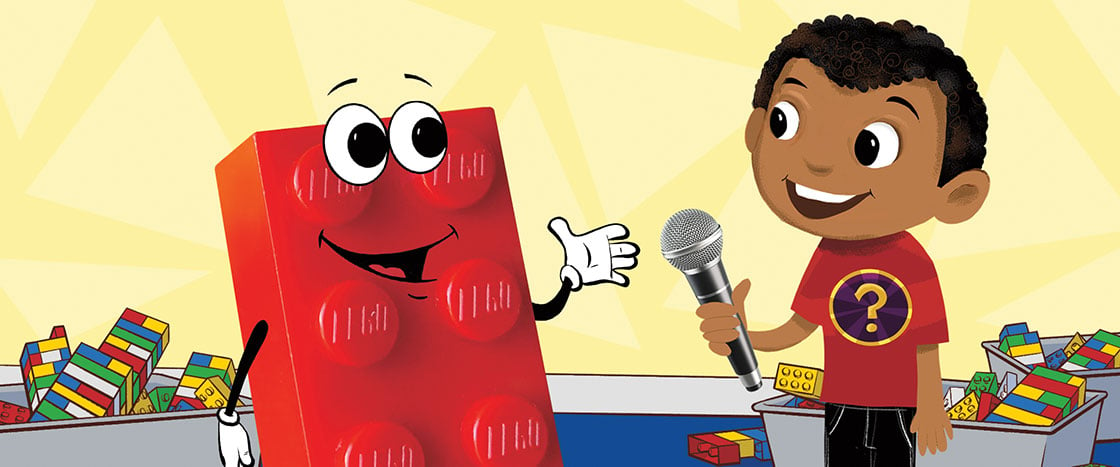ILLUSTRATIONS BY JEFF HARVEY
Hi! I’m Question Mark.
Before you read, practice saying these words:
- plastic
- hundreds
- studs
- tubes
- build

Question Mark gets the details about what’s up with LEGO® bricks.
ILLUSTRATIONS BY JEFF HARVEY
Hi! I’m Question Mark.
Before you read, practice saying these words:
1. Question Mark: I am here with a red LEGO brick! I am very happy to meet you.
LEGO Brick: Thank you! It is always nice to meet a fan.
Kostsov/Shutterstock.com
2. Question Mark: What are LEGO bricks made of?
LEGO Brick: We are made of very strong plastic.
3. Question Mark: How many kinds of LEGO bricks are there?
LEGO Brick: So many! We come in hundreds of shapes and sizes. But we all fit together.
4. Question Mark: How do LEGO bricks fit together?
LEGO Brick: LEGO bricks have studs on the top. There are tubes on the bottom. Press two bricks together. They lock into place!
Patrick Foto/Shutterstock.com (Boy); Tooykrub/Shutterstock.com (Giraffe)
5. Question Mark: What can I build with LEGO bricks?
LEGO Brick: Anything! You can build a car, or a house, or even a spaceship! Build what is fun for you.
6. Question Mark: Thanks, LEGO brick. I will!
More About the Article
NGSS Focus
Engineering design: Form and function
1. BEFORE READING
Preteach Vocabulary (3-5 minutes)
Preteach Navigating the Page (3 minutes)
2. READ THE INTERVIEW MULTIPLE TIMES (15-30 MINUTES)
1. BEFORE READING
2. READ THE INTERVIEW
Here are three ways to use this feature if you are doing remote learning.
Remote Option A: Live Synchronous Instruction (15-30 minutes)
Remote Option B: Family Fluency Activity (15-30 minutes)
Remote Option C: Kids Zoom With a Partner
After Reading ELA Focus: Vocabulary (15 minutes)
Craft Extension: Make a Microphone (20 minutes)